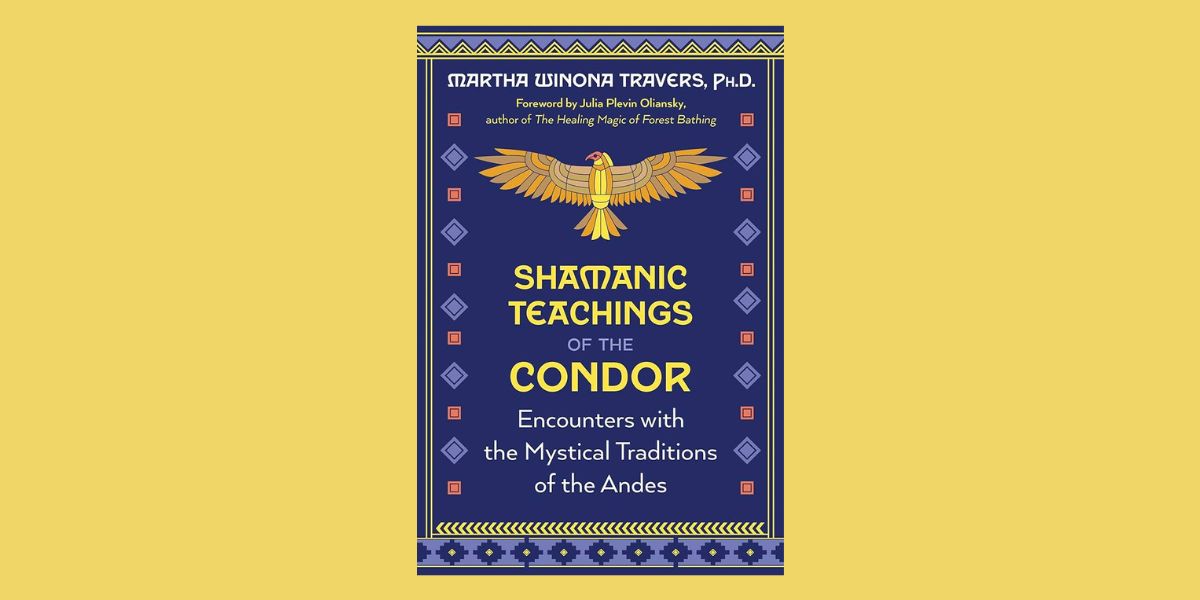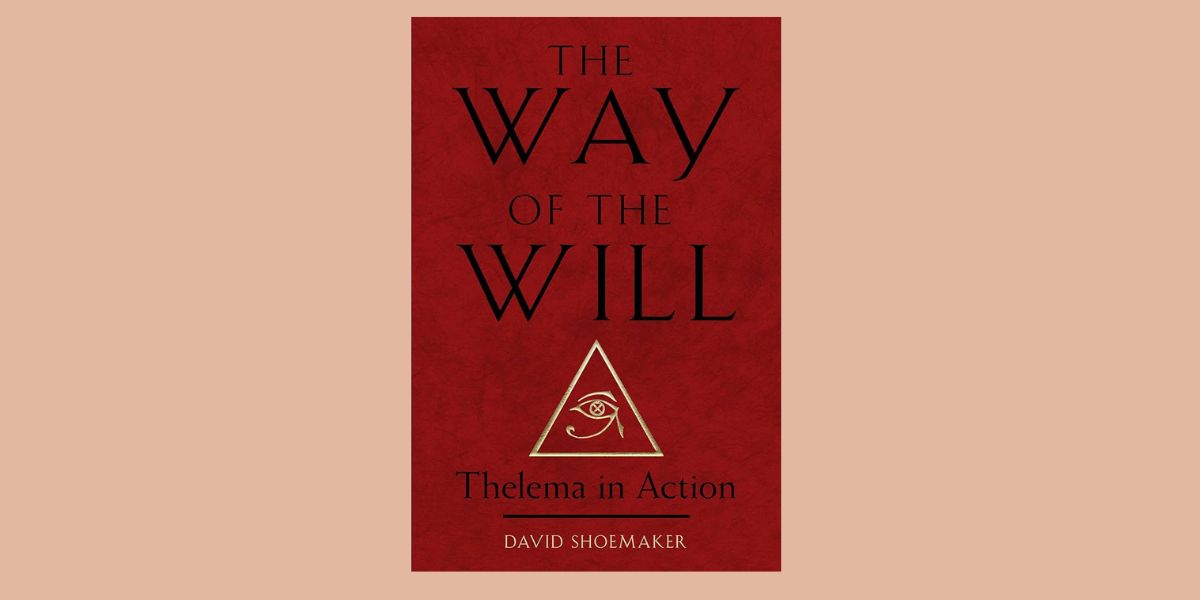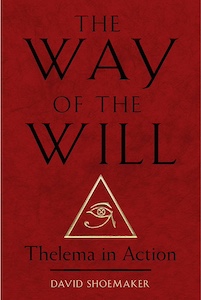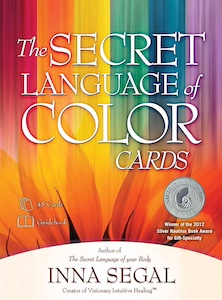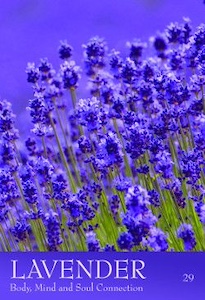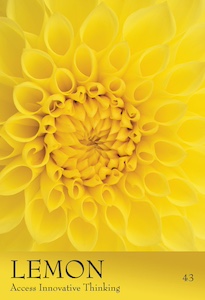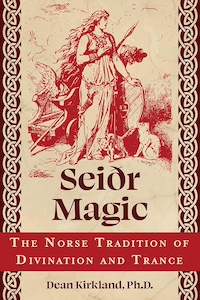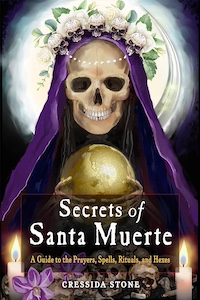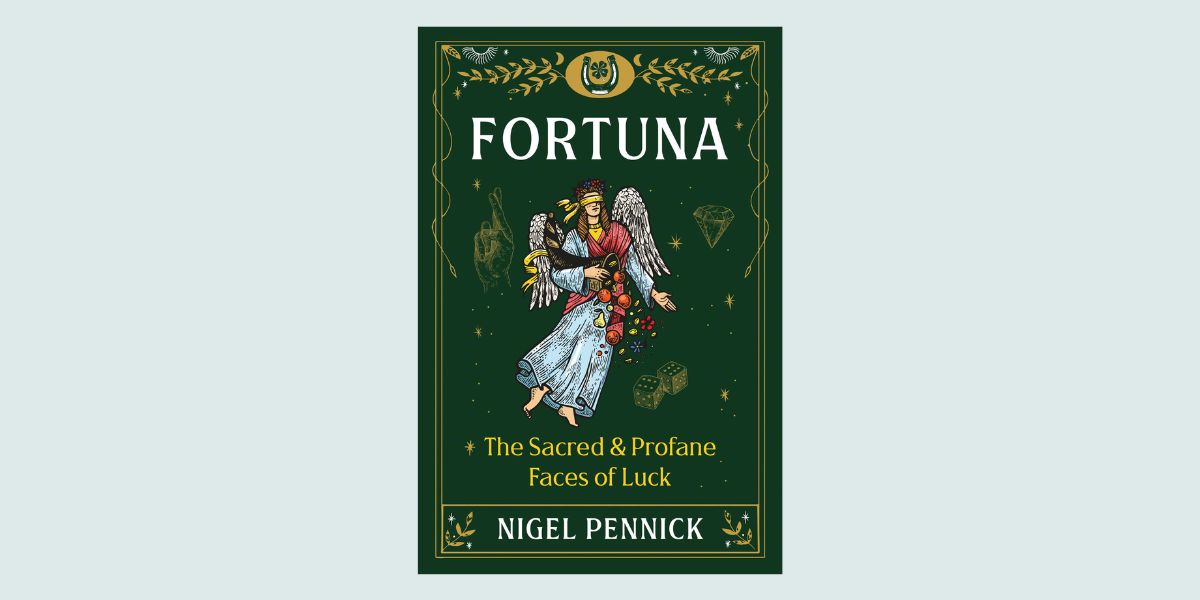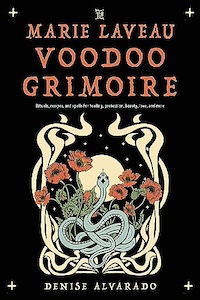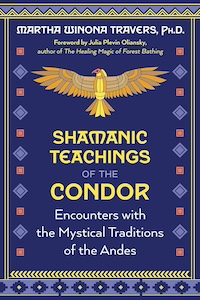
Shamanic Teachings of the Condor: Encounters with the Mystical Traditions of the Andes, by Martha Winona Travers, Ph.D.
Bear & Company, 1591435064, 192 pages, April 2024
In Shamanic Teachings of the Condor: Encounters with the Mystical Traditions of the Andes, Michigan-based author Martha Winona Travers, Ph.D., who holds a doctorate in English literature, writes about her twenty-two year apprenticeship to the Ecuadorian Kichwa healer Taita Alberto Taxo, who passed away in February 2022. This spiritual memoir is both a glowing eulogy honoring Taita Alberto’s life work and a guide to reconnecting with nature that shares his legacy with the world. Taita Alberto comes alive in these pages, imparting gentle, heart-centered wisdom. Through Travers’s recollections, we too can receive his teachings.
Taita Alberto (1954-2022) authored several books, including Friendship with the Elements: Opening the Channels of Communication (2010). Travers is also the creator of The Waycard Oracle: A Guide to the Inner Journey (2016), which includes 33 oracle cards and a guidebook.
Taita Alberto was a iachak, which is the Kichwa word for shaman. (The i in iachak is pronounced like a y.) Taita is an honorific title meaning “father,” indicating his role as a spiritual leader and teacher in his community.1 In 2007, he gave Travers the title of Mama Iachak, giving her the authority to carry on his tradition and transmit his teachings.
Iachaks, also known as “bird people,”2 identify with Condors. The Condor represents the Andean way of life, of “living from the heart,”3 in harmony with nature. The Eagle, the national bird of the United States, symbolizes “the people of the North,”4 who value technology and rationality, and live from the mind. “The Condor’s gift—the power of the heart—and the Eagle’s gift—the power of the mind—are two halves of a whole,”5 Travers says, and Taita Alberto taught that the time has come for the two to work together in harmony.
The iachak must bridge the cultural gap between the traditional way of life and the colonial one, retaining the native language while speaking the colonial tongue, and preserving the ancestral customs when most people in their community have converted to the colonial religion and adopted modern values. The power of flight enables the iachak to move freely between these cultural realms without being trapped in either one.
While many natives felt threatened by outsiders visiting Ecuador to study with the iachak due to the harm caused by colonialism, Taita Alberto claimed that it had been prophesied that the forces of mind and heart, the rational Eagle and the intuitive Condor, were now destined to unite.
“The Condor needs help with technology and science,” Taita Alberto said. “The Eagle needs help listening to the heart. We need both gifts—both the mind and the heart—for balance.”6
Travers met Taita Alberto (also known as Taita Haskusht, his Kichwa name) in 1999. In “Part One: The Eagle Visits the Condor,” Travers recounts her first journey to Quito, Ecuador, a part of the Andes Mountain range that includes multiple active volcanoes. She and a group of visitors were welcomed into the ancestral home of Taita Haskusht, near the base of the volcano Cotopaxi, which is itself a powerful spiritual guide. With vivid and immersive prose, this beautiful memoir floods the mind’s eye with the sights and sensations of her pilgrimage along the serpentine paths circling Cotopaxi.
Each chapter in this section revolves around communion with one of the five elements. In the iachak worldview, the physical realm is made up of the four elements of Earth, Air, Fire, and Water, plus the fifth element of Spirit, which is called Ushai in Kichwa. “The Ushai is the animating force of the universe; it is the energy that moves Earth, Air, Water, and Fire,”7 says Travers.“We experience the Ushai when we have the awareness that we are not separate from the elements.”8 All of the elements have feminine names in Kichwa: Fire is Nina, Water is Yaku, Air is Waira, Earth is Ashpamama, and Pachamama is the all-encompassing Great Cosmic Mother.
Chapter Three, “The Loving Earth,” is a moving account of a healing ritual in which the author recalls the experience of giving her pain to Mother Earth so it could be transformed by her. Prior to the ritual, Taita Haskusht encouraged the group to pick plants they felt drawn to for healing, following the wisdom of the heart to select the right one. When Travers attempted to ask Taita Haskusht to identify the plant she had chosen, he covered her mouth and turned away, triggering a deep wound within her. This was her first time attempting to speak to him, and she was hurt that he had silenced her.
Travers saw a migraine aura and feared a headache coming on, but she felt guided by an inner voice to follow the light instead of resisting it. While Taita Haskusht chanted, tears watered the earth as Travers and a grieving woman beside her relinquished their pain to the Mother. After the ritual, Taita Haskusht revealed to Travers that the plant she had selected “heals the voice.”9 I was dewy-eyed while reading this chapter, as I could feel the healing power of the Earth Mother through Travers’s vivid description of her experience.
In Chapter Four, “The Sacred River,” Travers describes the group’s experience of being purified in a volcanic hot spring, then dipping in a cold shallow stream, and the remainder of the day was spent resting and fasting. In the middle of the night, Travers woke several times, feeling afraid, and she glimpsed a ghostlike presence in the room. The next day, Taita Haskusht revealed that there had been “a great battle”10 during the night, as the impurities the group had released the previous day were manifesting as they were leaving. He blessed everyone by smudging them with the sweet-smelling woodsmoke of palo santo, a plant he said “loves us very much.”11
While reading, it felt beneficial to follow along by mimicking some of the actions described or by visualizing myself performing them with the narrator. For example, after reading about the smoke cleansing with palo santo, I burned some myself, asking the plant’s spirit to purify me.
Chapter Five, “The Speaking Wind,” invigorates readers with the breath of Andean air as Travers communes with the volcano Cotopaxi. When Travers first beheld the face of Cotopaxi, peeking through a veil of clouds, she thought it seemed sinister, and the words “grim” and “cruel” came to mind, but she realized this was how she was “dreaming up” the volcano, and she proceeded to listen with her heart instead.12 I found her commentary on humanity’s tendency to project their personal experiences onto the world to be very insightful.
“Listening is an open condition devoid of human projection,” Travers writes. “The iachak learns to separate from human fear and desire—those aspects of ego that create projection—and, instead, enters into a condition of receptivity to the many voices, the many languages of the many beings who share our world.”13
As Travers and her group embraced the presence of Cotopaxi, listening with their hearts and absorbing the mountain’s powerful essence, “Madre Waira,” or “Mother Wind,”14 lifted their spirits, cleansing them of negativity.
Part Two is titled “Becoming a Runa: Purification and Sacred Communion.” “In Kichwa, the word runa describes a person who is walking the path of life in a sacred way,”15 Travers writes. A runa lives in intimate harmony with the natural world, as our ancestors once did. Taita Alberto taught that we can reestablish this ancient connection with nature through communion with the elements.
In the second part of this book, Travers provides exercises for revitalizing our relationship with the elemental powers. By recognizing the elements within and honoring the sacredness of our bodies, we become more conscious of what we consume, and are reminded not to pollute our inner rivers. According to Taita Alberto, “everything is food,”16 from the air we breathe to the books and other forms of media we ingest, which is important to keep in mind, especially for those of us living in the Eagle’s consumer culture. Regardless of what we are eating, whether it is healthy or not, we express gratitude to Mother Earth when we savor and enjoy our food.
In the section on working with the Earth element, I found the dietary advice to be insightful. Travers suggests eating foods individually to gauge how they make us feel, allowing enough time to digest in between meals so the foods don’t mix. She provides general guidelines for how long to wait, such as half an hour for fruits, which digest quickly, and four hours for meat.
Taita Alberto did not eat meat and neither did his apprentice iachaks. As part of his own iachak training, he was instructed to consume a small portion of animal flesh, and was distressed to discover that it cut off his intuition for six months. “A person who eats animals is eating the animal’s fear,”17 he said. He saw animals as his “helpers” and did not want to harm them.
To eat or not eat meat has been a lifelong moral quandary for me. I went through a vegetarian phase as a teenager, which frustrated some members of my family, who treated me like I was just being a difficult child and a picky eater rather than recognizing it was a choice based on my personal morals and spirituality (I was strongly influenced by Buddhism at the time and didn’t want to hurt animals). It angered my dad so much he stopped cooking for me altogether, claiming he didn’t know what to make since I wouldn’t eat meat, so I had to fend for myself. I started eating meat again in my early 20s when I was pregnant with my second child. I decided that since I was craving meat, the baby needed it. I received positive feedback when I started eating meat again, as people would tell me I looked healthier and had more color in my cheeks. Whether or not this was true, I don’t know, but I was verbally rewarded for conforming to my culture’s dietary preferences. To this day, I’m still troubled by factory farming, even though I eat meat purchased from the grocery store. I currently get my eggs from my own flock of hens, so those are at least guilt-free and not tainted with sadness because I know my girls are treated well.
Reflecting on the negativity I experienced when I chose to be a vegetarian as a teenager reminds me that our Eagle culture conditions us to consume meat without question. Those who deviate from this cultural norm are perceived as picky eaters who inconvenience others, and perhaps even troublemakers if they speak out against cruelty to animals. I think part of the problem is the fact that we get our meat pre-packaged in grocery stores and we are completely disconnected from the source of these products, which cuts off any empathy we might otherwise feel for the animals being slaughtered in factory farms. In contrast, Taita Alberto was raised as a vegetarian in the iachak tradition, and since he had a heart-based connection with the animal realm and saw animals as his helpers, eating meat was taboo for him, and doing so disconnected him from his spiritual Source.
Taita Alberto did not pass judgement on those who eat meat and his guidelines are not meant to be strictly followed as rigid rules. The ultimate teacher is experience, and he encouraged his pupils to see for themselves how following his suggestions makes them feel and shifts their perceptions.
Taita Alberto did not teach his students to ingest psychoactive plants because “all of nature is entheogenic,”18 or “god-filled,”19 including ourselves. We do not need mind-altering substances to experience the awe of “sacred communion with nature.”20 Instead, he taught simple daily practices that “initiate us into primal identification with all of Nature.”21 Many of these exercises focus on simply being present in the physical body and communing with nature through mindful sensory experience.
For example, when you feel the wind whispering on your skin, recognize it as a salutation from the Air element. Allow it to cleanse you of your anxieties and negative thoughts. This type of feeling is intuitive, not emotional, as our emotions are generated in response to our thoughts. Instead, it involves putting “emotion aside in order to enter an expansive condition of full, sensory awareness, present-moment consciousness, and intuitive sensing of energy beyond the material.”22
Taita Alberto’s teachings can be put into practice through three simple steps: “greeting, feeling, and expressing gratitude.”23 Taita Alberto began his mornings by greeting the newborn day and the shining sun that brightens our lives. “Greet everything that appears before your eyes,”24 he said. Greet the six directions, north, south, east, west, sky above, and earth below.
These teachings may seem too simple for those craving a powerful transcendent experience, but Travers says that “true power is a quiet, internal state,” not “a dominating energy,”25 as our industrialized culture has programmed us to believe. The potency of these practices lies in their simplicity, for they are about creating inner transformation through how we perceive and engage with nature.
Shamanic Teachings of the Condor offers a heart-centered approach to communing with the four elements of nature and the fifth element of Spirit that unites them. Rather than just being mindful, the Shamanic Teachings of the Condor encourage readers to cultivate heart-centered awareness. This book has reminded me to drop my Eagle consciousness down into my Condor heart space, to be present with my intuitive feelings while deepening my communion with the natural world. By attuning with the wisdom of the heart, we can all reconcile with nature.

Rachel Christina McConnell is a witch, tarot reader, intuitive astrologer, and writing spider. She holds an MFA in Fiction from Columbia University in the City of New York. Her short stories have appeared in Dark Moon Lilith Press and Minerva Rising Press’s The Keeping Room. Links to her publications are available here: https://rachelchristinamcconnell.wordpress.com
